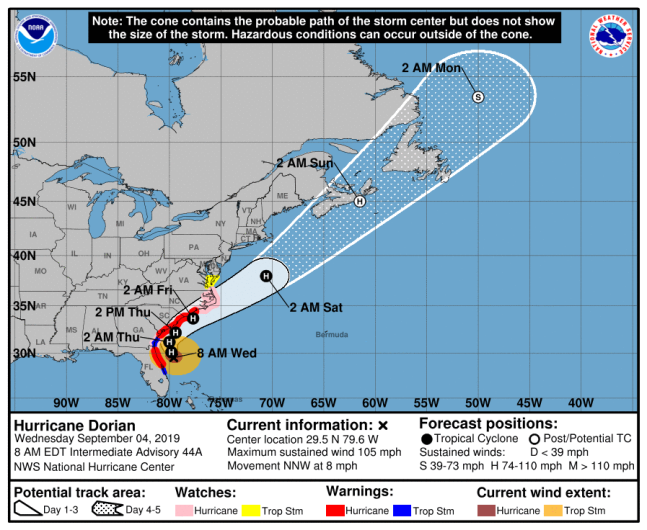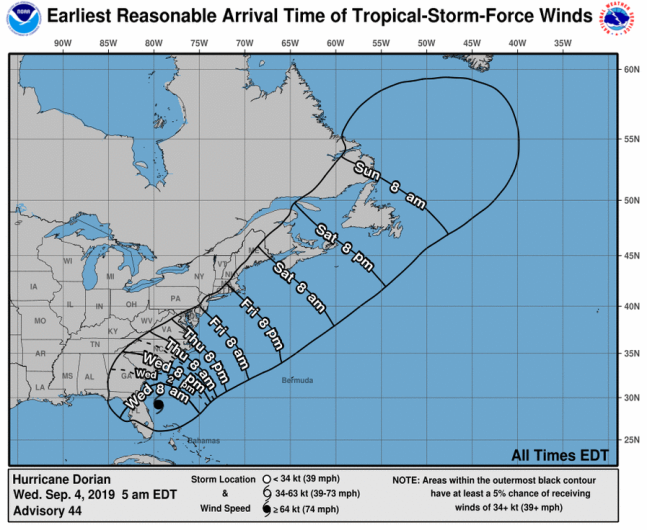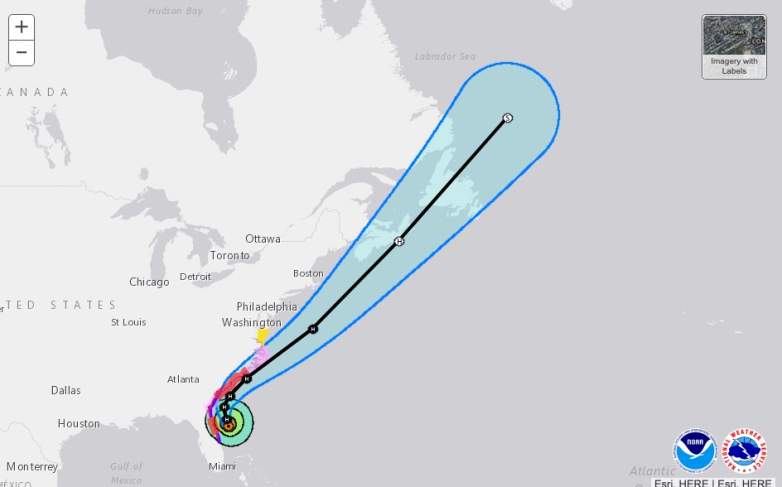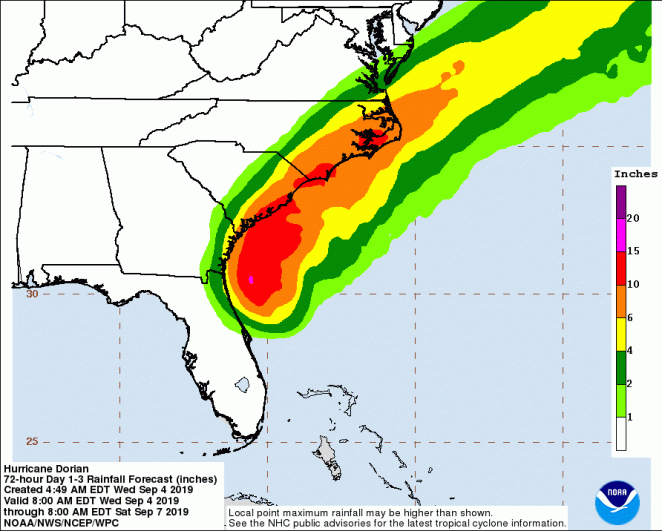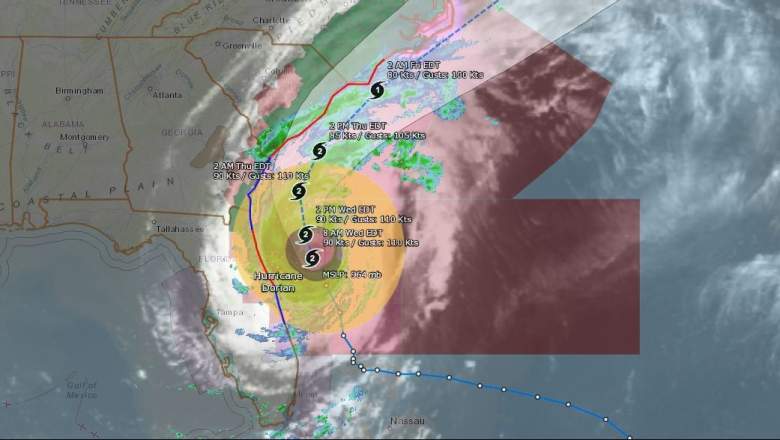
Hurricane Dorian is becoming a more disorganized hurricane as it moves parallel to the northeastern coast of Florida. The storm left parts of the Bahamas in devastation, but lost a lot of strength as it neared the coast. Read on to see maps and trackers of Hurricane Dorian’s path, updated for September 4, how close it may come to different states on the coast, along with the storm’s projected path. Hurricanes are unpredictable, so stay tuned as details can change over time.
Live Hurricane Dorian Interactive Map Trackers
A live map is provided by the NOAA’s nowCoast website below. You can see the full version here. Hit the plus button in the map below to zoom in to see the details about the hurricane’s track.
Google has two hurricane trackers, here and here, for tracking the storm. The only one that’s embeddable through the embedded (shown below) doesn’t currently show Dorian’s hurricane plot itself, but it is showing watches and warning areas along the coast. Depending on your browser, you may need to zoom into the map below using the + button to see the hurricane’s track. (Some browsers will show a far-away view despite the settings, but zooming in will allow you to see the map in full.)
MappingSupport.com offers an interactive Dorian map below. In a tweet about the map, users are advised: “Click dot then follow link for actual rain and wind data. Overlay layers can be turned on/off/restacked. Click ‘Map tips’ upper left corner to learn how. Data hosted on federal #GIS servers.” You can view the full map here.
Here’s a live tracker from Fox News.
Here’s a live tracker from Fox 35 Orlando.
And next is a track from WTSP.
Live Streams from Florida
And here are some streams from Florida. This first one from Surfline shows various streams from Florida to the Carolinas.
This next one is a live camera from Jacksonville.
Here is another live camera, this one from The Sun, showing Florida’s coast.
Hurricane Dorian’s Projected Path on September 4
Above is a map above from the National Hurricane Center showing a forecast cone and coastal watches and warnings released today, updated for September 4. This map does not indicate the hurricane’s size, but it does show the hurricane’s current projected path.
This next map may give you a better idea of when to first expect to feel the effects of the hurricane. This map shows the estimated arrival time of tropical storm force winds. The map below was updated Sept. 4.
Florida should start feeling tropical-storm force winds today as the storm nears.
Next is a different look at the hurricane’s projected path. Keep in mind that this map has an interactive component that you can view here. This screenshot is from September 4.
Wind Projection Maps of Hurricane Dorian
Next up is a wind-speed probability map. This shows the probability of tropical storm force winds, as predicted on September 4.
And next are predictions for the probability of hurricane force winds.
Rainfall & Flooding Potential Maps
This next map from NOAA shows the rainfall potential.
According to the National Hurricane Center on September 4 at 11 a.m., Hurricane Dorian is currently at 29.8 N, 79.7 W. It’s about 90 miles east-northeast of Daytona Beach, Florida and about 205 miles south of Charleston, South Carolina.
The storm is moving north-northwest or 335 degrees at 9 mph.
Maximum winds are currently 105 mph, down from 110 mph last night. Winds were up to 185 mph just a few days ago, but this is still a dangerous storm. Minimum central pressure is 964 mb (28.47 inches).
At 11 a.m., NOAA released the following information.
“At 1100 AM EDT (1500 UTC), the center of Hurricane Dorian was located near latitude 29.8 North, longitude 79.7 West. Dorian is moving toward the north-northwest near 9 mph (15 km/h) and this motion is expected to continue today. A turn toward the north is expected tonight, followed by a turn toward the northeast on Thursday. On this track, the core of Hurricane Dorian will move parallel to the Florida east coast and the Georgia coast through tonight. The center of Dorian is forecast to move near or over the coast of South Carolina and North Carolina Thursday through Friday.”
“Maximum sustained winds are near 105 mph (165 km/h) with higher gusts. A slow weakening is expected during the next few days. However, Dorian is expected to remain a powerful hurricane during this time. Hurricane-force winds extend outward up to 70 miles (110 km) from the center and tropical-storm-force winds extend outward up to
175 miles (280 km). NOAA buoy 41008, located off the Georgia coast, recently reported sustained winds of 40 mph (65 km/h) and a wind gust of 47 mph (76 km/h).”
READ NEXT: Dorian Live Radar, Satellite Streams & Florida Web Cams
